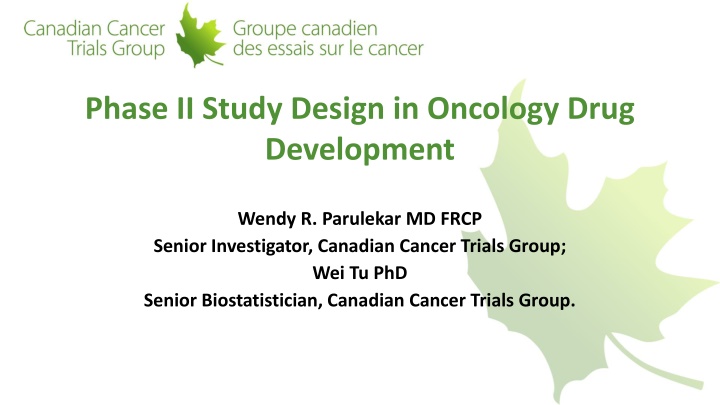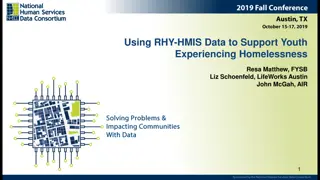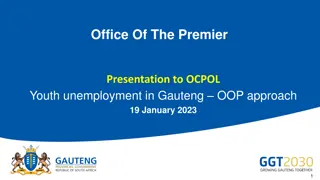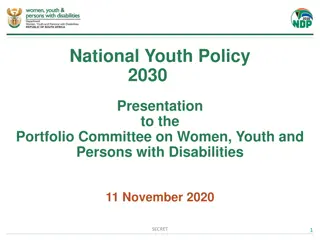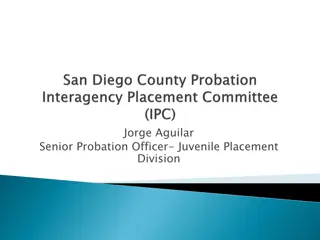LSWA Youth Program Committee Meeting
This virtual meeting of the LSWA Youth Advisory Committee on December 2, 2021, includes introductions, updates, a new program coordinator introduction, OSY program details, RFP solicitation, member affiliations, and meeting schedules. Additionally, general information on LSWA as a designated Workforce Development Area under WIOA and details on the competitive bid process are provided.
Download Presentation

Please find below an Image/Link to download the presentation.
The content on the website is provided AS IS for your information and personal use only. It may not be sold, licensed, or shared on other websites without obtaining consent from the author.If you encounter any issues during the download, it is possible that the publisher has removed the file from their server.
You are allowed to download the files provided on this website for personal or commercial use, subject to the condition that they are used lawfully. All files are the property of their respective owners.
The content on the website is provided AS IS for your information and personal use only. It may not be sold, licensed, or shared on other websites without obtaining consent from the author.
E N D
Presentation Transcript
Phase II Study Design in Oncology Drug Development Wendy R. Parulekar MD FRCP Senior Investigator, Canadian Cancer Trials Group; Wei Tu PhD Senior Biostatistician, Canadian Cancer Trials Group.
Disclosures WP: Pfizer, Celgene, Hecht Foundation, CBCF, CIHR, AstraZeneca, TerSera, Roche, Novartis/AAA; WT: None. 2
Learning objectives To define the role of a phase II study in oncology drug development To describe the statistical parameters that provide the framework and sample size for a phase II study To recognize and describe the objectives and design elements of commonly used randomized phase II designs
Roles of phase II study Primary purpose of phase II clinical trials in cancer is to identify promising regimens to take forward to a larger phase III trial. Depending on specific settings, a phase II trial will: Assess efficacy; Determine optimal dosage balancing efficacy and safety; Evaluate safety and side effect; Explore biomarker and identify subgroups; Inform Phase 3 trial design. 4
Characteristics of phase II study Moderate sample size: typically range from 30 to 200 patients, depending on disease stage and study design. Intermediate or surrogate endpoints: often use surrogate endpoints like tumor shrinkage to provide early indications of efficacy. Relaxed statistical errors: allows for more relaxed type I and type II error rates to achieve a feasible sample size. Moderate duration: typically lasts from a few months to a few years. Flexible design: employs a range of designs tailored to the research question and available resources. 5
Overview of phase II study design Targeted/cytostatic vs cytotoxic 1. Therapeutic considerations Single vs combination therapy Biomarker dependent vs not Design a phase II trial Proof of concept for phase III 2. Trial aim Treatment selection for phase III 3. Outcome of interest Activity +/- toxicity, +/- quality of life Categorical (response/no response) 4. Outcome measure Continuous (biomarker) Time to event (OS, PFS) 6 Adapted from Brown, S. R., et al. "Designing phase II trials in cancer: a systematic review and guidance." British journal of cancer 105.2 (2011): 194-199.
Overview of phase II study design (continued) Superiority 5. Hypothesis Non-inferiority or equivalence Single arm (no randomization) Design a phase II trial Randomization to experimental arms only 6. Randomization Randomization including control arm with no formal comparison Randomization including control arm with formal comparison One-stage vs two-stage vs multiple stage Response adaptive design 7. Other design choices category Phase II/III design Interim analysis for safety and/or efficacy 7 Adapted from Brown, S. R., et al. "Designing phase II trials in cancer: a systematic review and guidance." British journal of cancer 105.2 (2011): 194-199.
Randomization: PROs and CONs Randomization Randomization Design Design PROs PROs CONs CONs Lack of control data Single arm1 Single arm design; two stage design. Simple, efficient and easy to implement. Useful in rare diseases and signal detection. Lack on control data Randomization to experimental arms only Screening/selectio n design Allow exploration of multiple treatments (dosage, combination, etc.). Efficient use of resources. Randomization including control arm with no formal comparison Noncomparative randomized design (like 2 parallel single arm designs) Contemporaneous control allows meaningful interpretation of experimental arm. Sample size still moderate. Larger sample size comparing with single arm study; no formal statistical comparison. Randomization including control arm with formal comparison Randomized control trial Robust evidence. Minimizes bias. Regulatory acceptance. Large sample size; long trial duration; complexity and cost. 1. Includes platform design where patients were assigned to each cohort/substudies based on biomarker since each cohort can be viewed as a single arm study. 8
What key factors should be What key factors should be considered when picking considered when picking one of these 4 designs? one of these 4 designs? Start presenting to display the poll results on this slide. 9
Randomization: yay or nay Consideration Yay Nay Use of historical control data to specify their design. Reliance on historical control data for setting target response makes results of single- arm trials unreliable. For several diseases, well-established resources allow for determination of historical response to treatment. Success in phase II should reliably predict that clinical benefit will be observed in phase III. The classical single-arm paradigm has per- formed poorly in predicting clinical benefit in phase III; randomized designs would perform better. No evidence is available to suggest the use of randomization in phase II has improved success in phase III. There is a trade-off between trial complexity and quality. In conducting a randomized trial, you get what you pay for, with better quality data accrued. Single-arm trials are simpler and easier to conduct. Randomized phase II designs appear more similar to phase III designs than conventional phase II designs. A highly statistically significant P value from a randomized trial would provide a strong case for seeking regulatory approval. Investigators may incorrectly interpret the results of randomized phase II trials as though they are from a large phase III study. Molecularly targeted agents may often be cytostatic and not in general lead to tumor shrinkage. PFS should be the preferred primary out- come for cytostatic agents, which in turn makes randomization preferable. The use of tumor response is still appropriate because several cytostatic agents have led to statistically significant tumor regression. 10 Grayling, Michael J., et al. "A review of perspectives on the use of randomization in phase II oncology trials." JNCI: Journal of the National Cancer Institute 111.12 (2019): 1255-1262
Which design do you think Which design do you think is mostly used for phase 2 is mostly used for phase 2 trials? trials? Start presenting to display the poll results on this slide. 11
Systematic review of phase II oncology trials 1. Based on 557 phase II and phase II/III oncology clinical trials published from 2010-2015. 2. More than half (57%) used single-arm design, and 21% used randomized comparative design. 3. For single arm design, ORR is the most common endpoint (41%); for randomized comparative design, PFS is the most common (40%). 4. Sample size is smallest for single-arm design while largest for randomized comparative design. 5. Randomized comparative design has a lower positive result rate than other designs (28% vs 70%+). 12 Grayling, Michael J., et al. "A review of perspectives on the use of randomization in phase II oncology trials." JNCI: Journal of the National Cancer Institute 111.12 (2019): 1255-1262
Example: single arm single stage (HN10) Primary endpoint: 2 year EFS rate (binary). Hypotheses: H0, 2 year EFS </= 85%; HA, 2 year EFS > 85%. Non-inferiority margin 6%. Statistical parameters: one-sidedalpha 0.1, power 80%. Sample size: 100 Triger for analysis: 304.7 person-years of follow up Go/no go decision: H0 rejected if observed 2 year EFS rate higher than 88.85% or less than 18 EFS events. Status: final analysis done and primary publication pending. 13
Example: single arm two stages (IND.182) Primary endpoint: Objective response using standard criteria for non-Hodgkin lymphoma. Hypotheses: H0: ORR </= 5%; HA: ORR >/= 20%. Statistical parameters: one-sidedalpha 0.12, power 89%. Sample size: first stage 15, continue if at least one response; second stage additional 10. Go/no go decision: H0 rejected if at least 3 responses among 25 patients. Result: first stage 17 eligible patients, 15 evaluable for response. No responses seen study stopped. No convincing pharmacodynamic evidence of antiangiogenic activity elap ed refractory or tran formed cell lymphoma mg po daily, q wee e pon e Buckstein, Rena, et al. "Sunitinib in relapsed or refractory diffuse large B-cell lymphoma: a clinical and pharmacodynamic phase II multicenter study of the NCIC Clinical Trials Group." Leukemia & Lymphoma 52.5 (2011): 833-841 14
Example: randomized to multiple experiment arms (IND.163) Primary endpoint: objective response or lack of early (< 8 weeks) progression Hypotheses: H0: ORR </= 5% and early progression rate >/= 60%; HA: ORR >/= 20% or early progression rate </=40%. Statistical parameters: two-sidedalpha 0.1, power 93%. Sample size: stage 1, 15 patients randomized to each arm; if no response or more than 10 early progression, stop; otherwise, stage 2 adds another 15 patients randomized to open arm. Go/no go decision: H0 rejected if at least 4 response or less than 13 early progressions among 30 patients. Result: weekly schedule: no response and 11 early progression, stopped at stage 1; daily schedule: 4/30 responses (ORR = 12%). ecurrent meta ta c brea t cancer erolimu mg po daily for day q wee and early progre ion trat factor i ceral meta ta e rior chemo regimen erolimu mg po once wee ly day , , , q wee Ellard, Susan L., et al. "Randomized phase II study comparing two schedules of everolimus in patients with recurrent/metastatic breast cancer: NCIC Clinical Trials Group IND. 163." Journal of Clinical Oncology 27.27 (2009): 4536-4541. 15
Example: Randomization including control arm with no formal comparison (IND.165) Primary endpoint: Proportion of patients with PSA decline > 50% from baseline Hypotheses: H0: experimental arm PSA response </= 40%; HA: PSA response >/= 60%. Statistical parameters: one-sidedalpha 0.1, power 90%. Sample size: 40 patients each arm. Total = 80. Go/no go decision: H0 rejected if 20 or more responses seen in experimental arm. Result: Docetaxel + Prednisone: 54% (90% CI 39.8-67.1); Docetaxel+ Prednisone + OGX 011: 58% (90% CI 43.3-70.8). mg I q wee ly mg po bid eta ta c pro tate cancer with progre ion on androgen abla on cacy mg I q wee ly mg po bid mg I loading do e then wee ly Chi, Kim N., et al. "Randomized phase II study of docetaxel and prednisone with or without OGX- 011 in patients with metastatic castration-resistant prostate cancer." Journal of clinical oncology 28.27 (2010): 4247-4254. 16
Example: Randomization including control arm with no formal comparison (IND.165) Secondary Secondary Endpoint Endpoint Docetaxel + Docetaxel + Prednisone + Prednisone + OGX 011 OGX 011 Docetaxel + Docetaxel + Prednisone Prednisone RR (95% CI) 19% (95% CI 6.6-39.4) 25% (95% CI 9.8- 46.7) Median PFS (95% CI) 7.3 months (95% CI 5.3-8.8) 6.1 months (95% CI 3.7-8.7) Overall Survival (95% CI) Median 23.8 months (95% CI 16.2-not reached) 16.9 months (95% CI 12.8- 25.8) 17
Example: Randomization including control arm with formal comparison (IND.209) Primary endpoint: Proportion of patients lack of progressive disease (LPD) at 12 weeks. Hypotheses: H0: LPD = 20%; HA: LPD = 50%. Statistical parameters: two-sidedalpha 0.1, power 90%. Sample size: 40 patients each arm. Total = 80. Go/no go decision: H0 rejected if p value smaller than 0.1. Result: 12-week LPD rate was 61% (Arm A experimental) and 52.4% (Arm B control) p=0.51 (not statistically significant). Eigl, Bernhard Josef, et al. "A randomized phase II study of pelareorep and docetaxel or docetaxel alone in men with metastatic castration resistant prostate cancer: CCTG study IND 209." Oncotarget 9.8 (2018): 8155. 18
Example: Randomization including control arm with formal comparison (IND.209) No survival benefit observed. 19
Any other questions? Any other questions? Start presenting to display the poll results on this slide. 20
